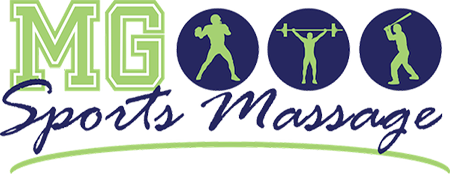You’ve just completed your biggest event of the year. You pushed yourself to the limit, played defense or offense as though your life depended on it, ran your personal best, or scored a record number of baskets or touchdowns, and now your muscles are torn to pieces.
Physical activity of this level can wreak havoc on your musculature system, and if it’s not addressed properly, recovery is often difficult, especially as your body ages.
You’ve heard recently that more and more amateur and professional athletes are using massage therapy as part of their training, especially for muscle recovery. In fact, your friend has been telling you for the past few months that he or she has added massages to their training regimen, and the difference has been noticeable in his or her performance on a consistent basis. So to get ahead of the muscle restoration process, your friend gives you the number of his or her therapist, and you call to request a session, explaining your athletic background.
“Do you prefer deep tissue or sports massage?” they ask.
Unless you are familiar with massage therapy and the different practices, you probably will not know the differences between those two options, and you’ll have a challenging time deciding which one is going to benefit you the most. While the names are quite different, they have similar theories, and they are, in fact, often confused; but there are differences.
The first step to answering that question is to understand what each type is and how they differ.
DEEP TISSUE MASSAGE
As we discussed in a previous article, deep tissue massage uses firmer pressure than relaxation massage (the most popular and well-known practice of massage therapy) and slower, stronger strokes to reach the deepest layers of tissue.
It begins with lighter, more comfortable strokes to warm up muscles and then transitions into techniques like stripping (along the length of the muscle) and friction (against the grain of the muscle) to reach the deeper layers of tissue. This type of massage is most commonly used for breaking up scar tissue and relieving painful adhesions, (commonly referred to as “knots”) and is most often preferred by those suffering from:
- Back pain (both lower and upper)
- Neck pain
- Previous injury (car, work, athletic, etc.)
- Mobility limitations
- Muscle tension
- Stress
The longer, soothing strokes relax muscles while shorter, firmer, cross-grain movements loosen them and dislodge scar tissue and knots. This can cause some discomfort during the massage as well as soreness for a few days afterward, but should not be painful. If you do feel pain during a massage, speak up to your therapist – your muscles may not be warmed up enough, which they can quickly correct so your session is enjoyable.
SPORTS MASSAGE
The end goal of sports massage is to help athletes perform better.
You’re not focused on relaxation or overall health like in other massage practice – it’s just for increased performance as well as an aid in musculature system recovery.
This type of massage therapy uses specific techniques and flexibility or motion applications with a particular intent in mind. These types of massages are typically given:
- Before an event
- After an event
- During recovery
- After an injury
- Or as general maintenance
The range of techniques also differs from client to client, from event to event. If an athlete is about to participate in an intense event, your therapist’s choice of technique will differ from massaging an athlete who recently suffered an injury. And if you’re receiving a massage after sustaining damage, your therapist won’t provide the same massage they gave you as part of your pre-game warm up.
Your activity of choice will also change the area of the body on which your therapist will focus. If you’re a competitive runner, he or she will likely focus on leg muscles and knee and ankle joints; if you’re a weightlifter, your massage will concentrate on the upper back and arms.
It often includes tools, stretching, and flexibility techniques as well.
SIMILARITIES AND DIFFERENCES
Both sports massage and deep tissue massage focus on reaching the deeper levels of tissues using similar technique choices. But that’s generally where the similarities end.
A sports massage therapist will focus on injury-related areas for athletes such as isolating particular areas of muscles that are most affected by your choice of activity while a therapist performing deep tissue massage will focus on all-over relaxation, stress reduction, and healing physical pain and discomfort. The goal of sports massage is not to feel relaxed, but to aid in healing, muscle recovery, injury prevention, and athletic performance.
Sports massage also has a more focused clientele. People looking to receive this type of therapy are commonly professional or amateur athletes or those who use athleticism as a long-term hobby: frequent runners, weightlifters, individuals who attend workout classes regularly, etc. People who do not participate in a grueling activity on a standard schedule would not seek out this particular type of massage therapy.
And unlike other forms of massage, sports massage will treat other soft tissues such as ligaments and tendons as well, as they are a significant part of athletic performance. It also involves stretching techniques not used in other types of treatments.
Deep tissue massage, on the other hand, is a more frequently used type of massage therapy – second only to relaxation massage – and has a much wider range of clientele, including those with sedentary jobs and lifestyles. These individuals usually suffer from symptoms of:
- Fibromyalgia
- Arthritis
- Tension headaches
- Sciatic nerve pain
- General muscle tension
They also tend to work deep tissue therapy into their schedules on an as-needed basis or as an occasional indulgence, unlike a sports massage which is more often part of a scheduled routine.
WHICH CHOICE IS BEST FOR YOU?
You’ve been given the information and have a better understanding of both types of massages. Now for the original question: which choice is the right one for you? Do you need a sports or deep tissue massage?
It’s all going to come down to your preferences and your lifestyle.
Do you participate in regular, physical activity? If yes, are your muscles and joints under strain from it? Have you noticed a decrease in your performance and/or an increase in recovery time?
If any of those questions strike a chord with you, the answer is: sports massage.
You’re going to recover more quickly; perform better at your meets, games, and during workouts; and feel better in general. Your body will thank you.

